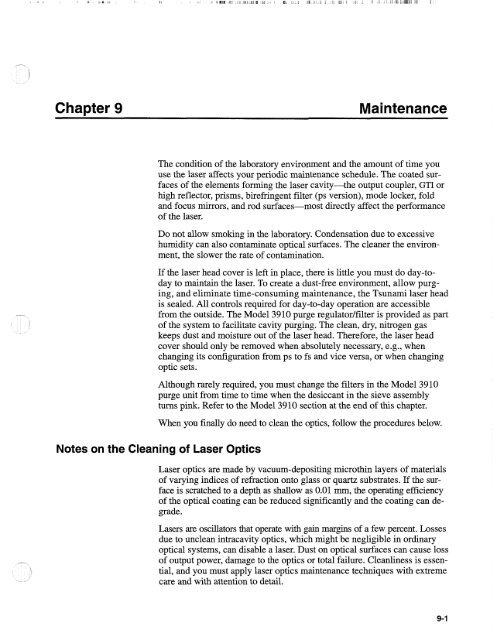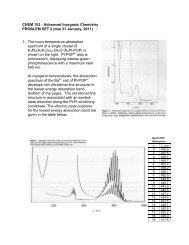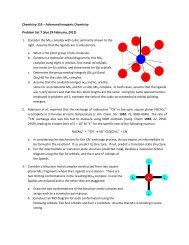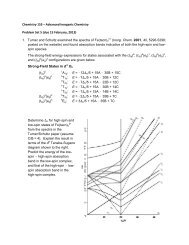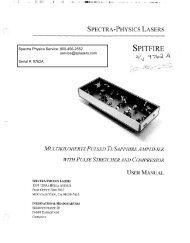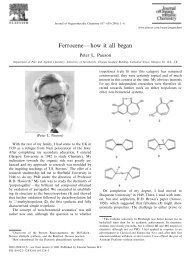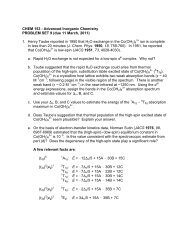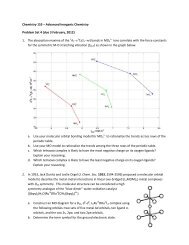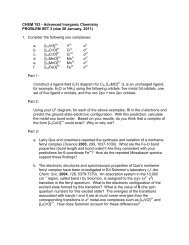Tsunami - Beckman Institute Laser Resource Center
Tsunami - Beckman Institute Laser Resource Center
Tsunami - Beckman Institute Laser Resource Center
Create successful ePaper yourself
Turn your PDF publications into a flip-book with our unique Google optimized e-Paper software.
Chapter 9<br />
Maintenance<br />
The condition of the laboratory environment and the amount of time you<br />
use the laser affects your periodic maintenance schedule. The coated surfaces<br />
of the elements forming the laser cavity-the output coupler, GTI or<br />
high reflector, prisms, birefringent filter (ps version), mode locker, fold<br />
and focus mirrors, and rod surfaces-most directly affect the performance<br />
of the laser.<br />
Do not allow smoking in the laboratory. Condensation due to excessive<br />
humidity can also contaminate optical surfaces. The cleaner the environment,<br />
the slower the rate of contamination.<br />
If the laser head cover is left in place, there is little you must do day-today<br />
to maintain the laser. To create a dust-free environment, allow purging,<br />
and eliminate time-consuming maintenance, the <strong>Tsunami</strong> laser head<br />
is sealed. All controls required for day-to-day operation are accessible<br />
from the outside. The Model 3910 purge regulatorlfilter is provided as part<br />
of the system to facilitate cavity purging. The clean, dry, nitrogen gas<br />
keeps dust and moisture out of the laser head. Therefore, the laser head<br />
cover should only be removed when absolutely necessary, e.g., when<br />
changing its configuration from ps to fs and vice versa, or when changing<br />
optic sets.<br />
Although rarely required, you must change the filters in the Model 3910<br />
purge unit from time to time when the desiccant in the sieve assembly<br />
turns pink. Refer to the Model 3910 section at the end of this chapter.<br />
When you finally do need to clean the optics, follow the procedures below.<br />
Notes on the Cleaning of <strong>Laser</strong> Optics<br />
<strong>Laser</strong> optics are made by vacuum-depositing microthin layers of materials<br />
of varying indices of refraction onto glass or quartz substrates. If the surface<br />
is scratched to a depth as shallow as 0.01 mm, the operating efficiency<br />
of the optical coating can be reduced significantly and the coating can degrade.<br />
<strong>Laser</strong>s are oscillators that operate with gain margins of a few percent. Losses<br />
due to unclean intracavity optics, which might be negligible in ordinary<br />
optical systems, can disable a laser. Dust on optical surfaces can cause loss<br />
of output power, damage to the optics or total failure. Cleanliness is essential,<br />
and you must apply laser optics maintenance techniques with extreme<br />
care and with attention to detail.


